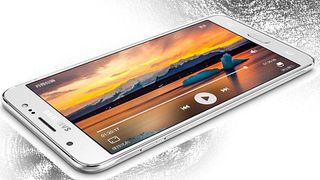Samsung Galaxy J7 (2016) vs Xiaomi Redmi Note 3
Which one prevails?

The Xiaomi Redmi Note 3 is going to be used as a benchmark whenever a new mid-range handset is released. With the Samsung Galaxy J7 (2016) now making its way to India, it's only fair that we compare the two handsets.
Key features
The Galaxy J7 and the Redmi Note 3 are not exactly the same when it comes to displays. While the Redmi Note 3 enjoys a crisp 5.5-inch Full HD display (1920x1080), the Galaxy J7 (2016) available in India comes with a 720p display (1280x720) on board. Surprisingly, the Chinese variant of the Galaxy J7 comes with a Full HD display, so it's a little surprising that they've decided to stick with a sub-par 720p display for the Indian version.
However, the Galaxy J7 seems to have a minor advantage in this area as it sports a Super AMOLED panel, while Xiaomi is sticking to a standard LCD panel. But to counter this, Xiaomi's offering comes with a fingerprint scanner and a relatively large 4,000 mAh battery, while the Galaxy J7 lacks a fingerprint scanner and comes with a 3,300 mAh battery on board.
Design
Gone are the days of mid-rangers being plastic dummies. Manufacturers take design very seriously today and almost every mid-range handset comes with a metal body, just like the Redmi Note 3 and the Galaxy J7. Although Samsung's design is less flattering compared to Xiaomi's. The Galaxy J7 is also slightly heavier than the Redmi Note 3, which doesn't help its cause.
Camera
Samsung has crammed in a 13MP rear camera and a 5MP front camera with the Galaxy J7 (2016). Xiaomi is touting a 16MP rear camera and a 5MP front camera with the Redmi Note 3. Since we're yet to properly judge the camera performance of the Galaxy J7, it's hard to come to a conclusion here. But the Redmi Note 3 has proven itself to be a more than capable performer in the camera segment, so the Galaxy J7 will have its work cut out.
Processor
Samsung is utilizing a 1.6 GHz Exynos octa-core processor, while Xiaomi is using the Snapdragon 650 hexa-core CPU. This is an area where we think Xiaomi has an advantage. However, we're yet to encounter detailed benchmark details to back up this claim.
Battery
Xiaomi has a winner on its hands with the Redmi Note 3 and its 4,000 mAh battery. Samsung comes close with the 3,300 mAh unit, but one has to admit that it's not going to last as long as the Redmi Note 3. But we must mention that both devices will have a flurry of UI tweaks which should eke out at least a day's usage on full charge. Customers can't go wrong with either device.
Get daily insight, inspiration and deals in your inbox
Get the hottest deals available in your inbox plus news, reviews, opinion, analysis and more from the TechRadar team.
Other features
The Galaxy J7 is available with 2GB of RAM and 16GB of internal storage. The Redmi Note 3 is available in a 16GB + 2GB configuration as well as a 32GB + 3GB variant, so one can say that Xiaomi has an upper hand as far as variants are concerned. Both devices can support microSD cards of up to 128GB.
Pricing and availability
The Redmi Note 3 is an Amazon India exclusive and is available on a flash sale every week, with prior registrations required. It is priced at Rs 9,999 for the 2GB RAM model and Rs 11,999 for the 3GB RAM variant.
The Galaxy J7 (2016) will be available for Rs 15,990 via e-commerce retailer Flipkart starting Tuesday (10th of May). As you can see, Samsung has yet again missed a trick with the pricing of its latest mid-ranger.
Most Popular



